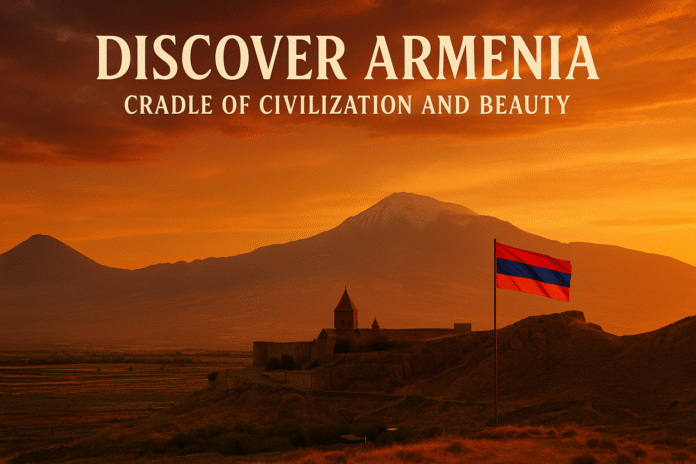Introduction
Nestled in the South Caucasus region, Armenia is one of the oldest countries in the world, with a rich spiritual heritage. Armenia, which has a biblical past, enthrals tourists with its magnificent mountains, enduring monasteries, lively culture, and hospitable people. Famous for being the first nation to embrace Christianity, it is also home to UNESCO World Heritage sites, delicious food, and kind people who take great pride in maintaining their customs.
Armenia offers a singular and remarkable experience, regardless of your interests in sacred history, daring trekking routes, or vibrant cultural experiences.
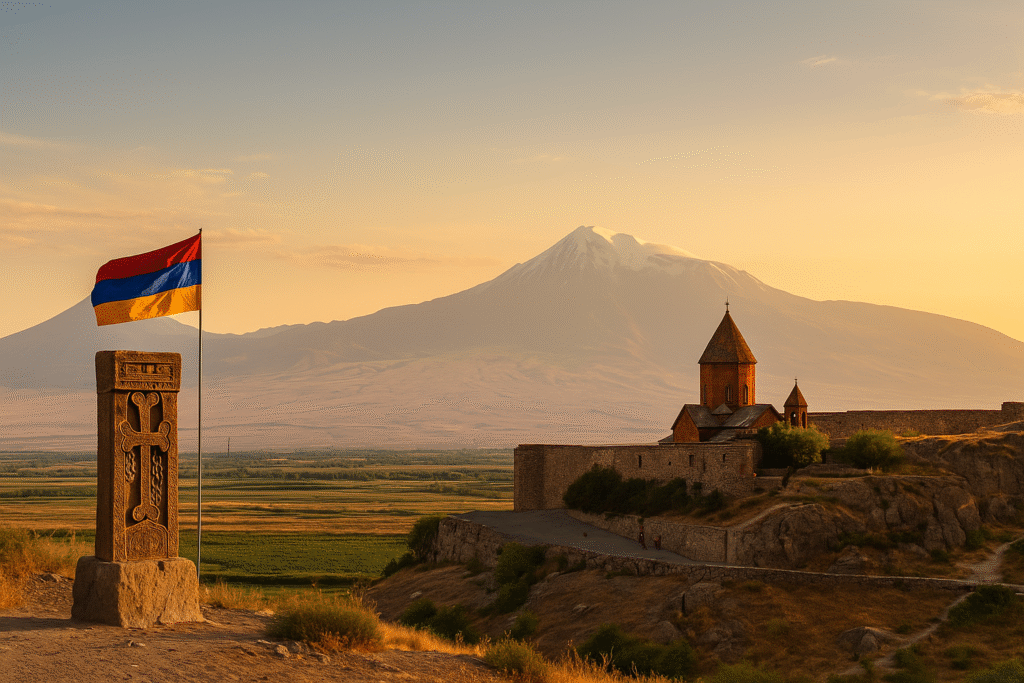
This blog will explore Armenia’s:
- Location and environment
- History, both ancient and contemporary
- Deeply ingrained customs and culture
- Industries and the economy
- Must-see tourist destinations
- Religion and languages
- Particulars and a worldwide reputation
Geographical Location of Armenia
Where Is Armenia Located?
- Continent:Technically speaking, Eurasia is situated between Eastern Europe and Western Asia in the South Caucasus region.
- Coordinates: Between latitudes 38° and 42° N and longitudes 43° and 47° E
Bordering Countries:
- Georgia to the north
- Azerbaijan to the east
- Iran to the south
- Turkey to the west
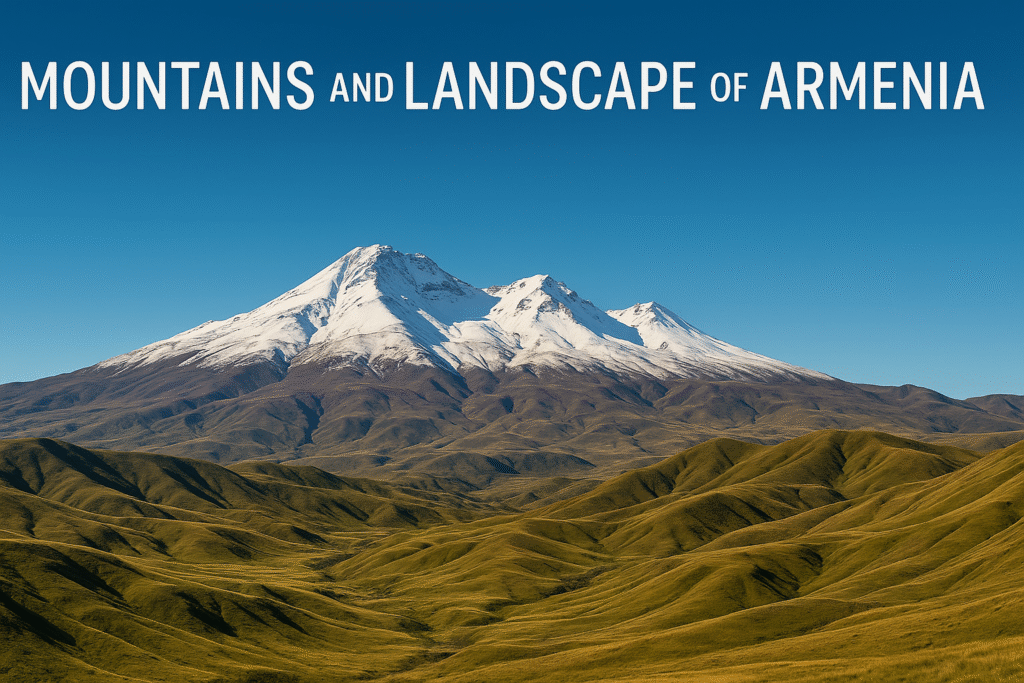
Key Geographical Features:
- Mountains: The mountain range of the Lesser Caucasus dominates
- Volcanoes and Highlands: Mount Aragats is the highest point in Armenia, which is entirely covered in mountains (4,090 meters).
- Rivers and Lakes: The largest lake in the Caucasus is Lake Sevan.
- Climate: Continental climate: chilly winters and scorching summers
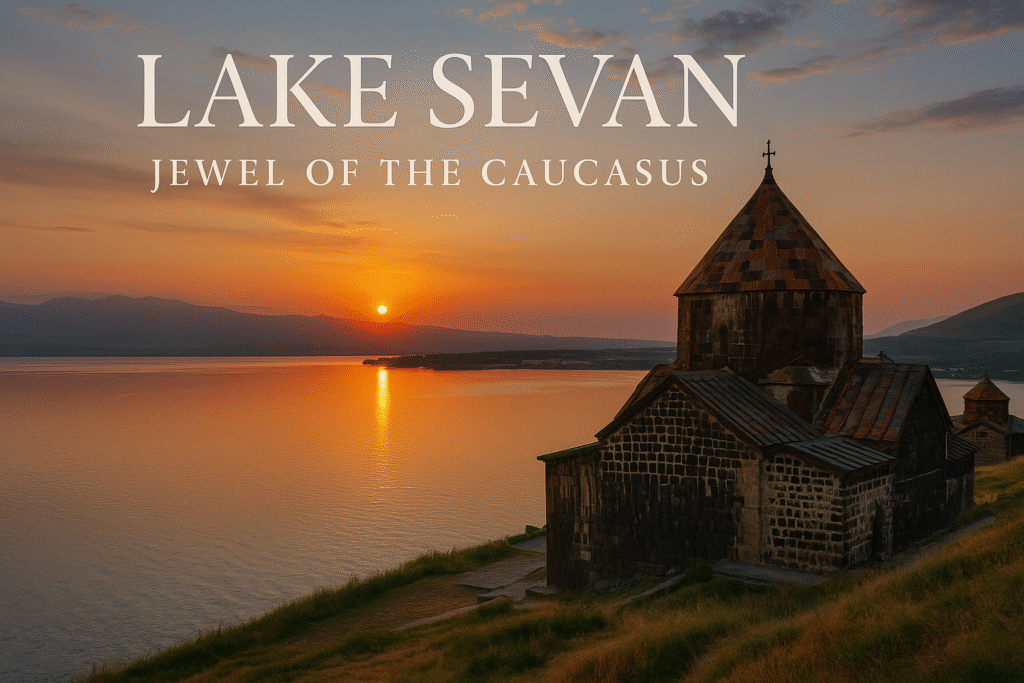
A Glimpse into Armenian History
Prehistoric and Ancient Civilizations
- Evidence from archaeology points to Stone Age human settlements.
- One of the first states to be formally organised was the Kingdom of Urartu (9th century BC).
- The Armenian Highlands are regarded as the birthplace of Indo-European culture.
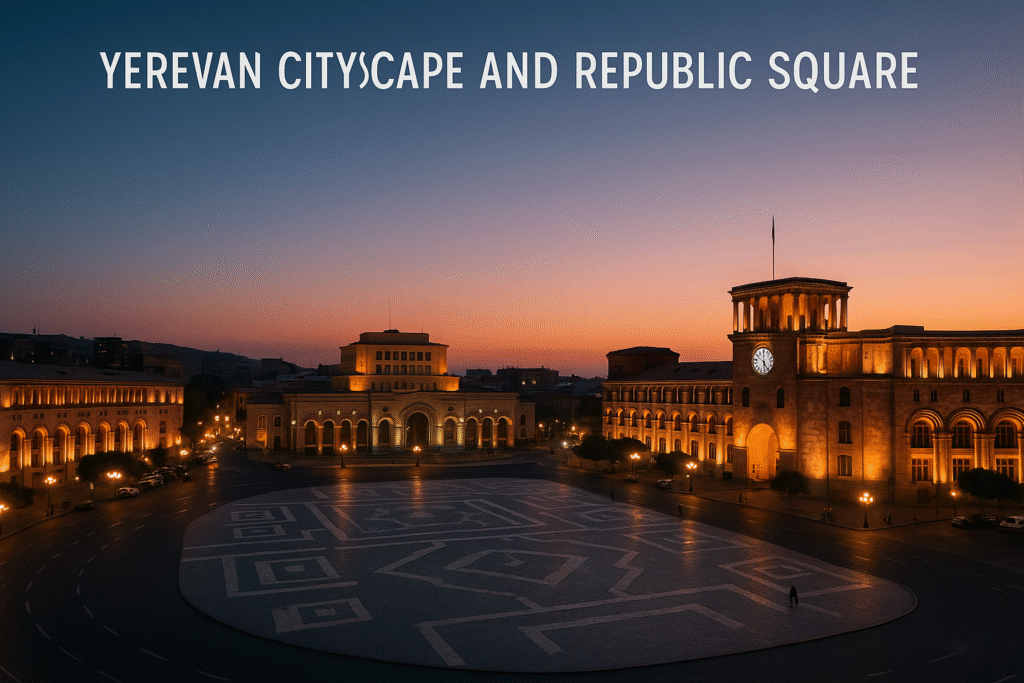
Armenia and Christianity
- In AD 301, Armenia became the first nation to formally embrace Christianity.
- A major contributor to the country’s Christianization was Saint Gregory the Illuminator.
- One of the world’s oldest churches is Etchmiadzin Cathedral.
Medieval Kingdoms and Empires
- From the ninth to the eleventh centuries, Bagratid Armenia flourished.
- Byzantine, Persian, Arab, and Ottoman eras
- An agonising chapter in the nation’s memory is the Ottoman Empire’s 1915–1917 Armenian Genocide.
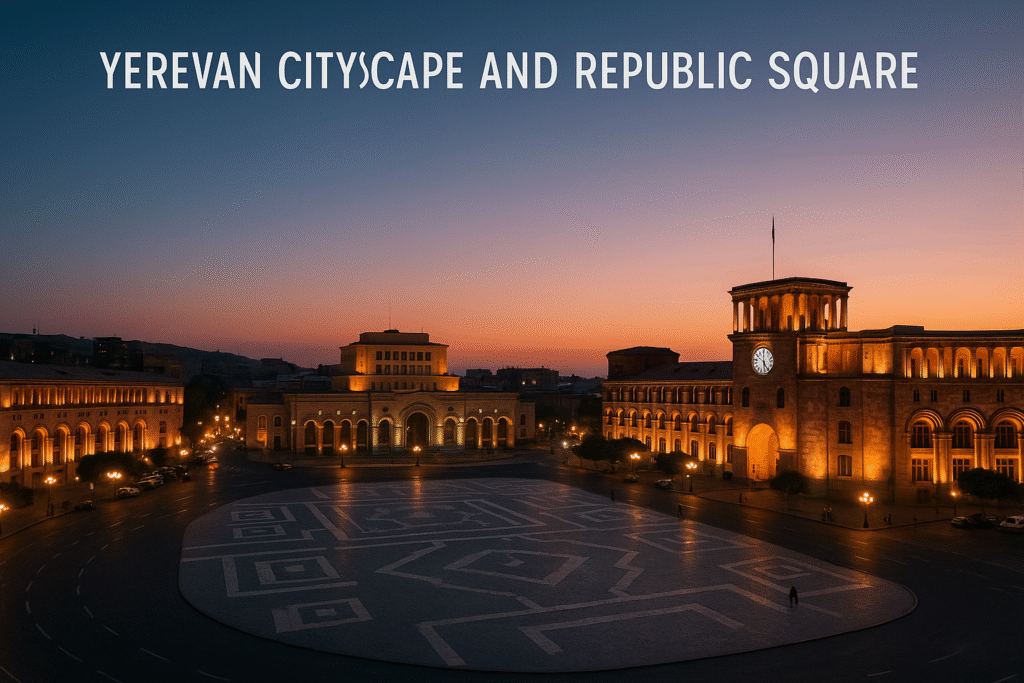
Soviet Era and Independence
- joined the Soviet Union in 1922.
- declared its independence on September 21, 1991, following the fall of the USSR.
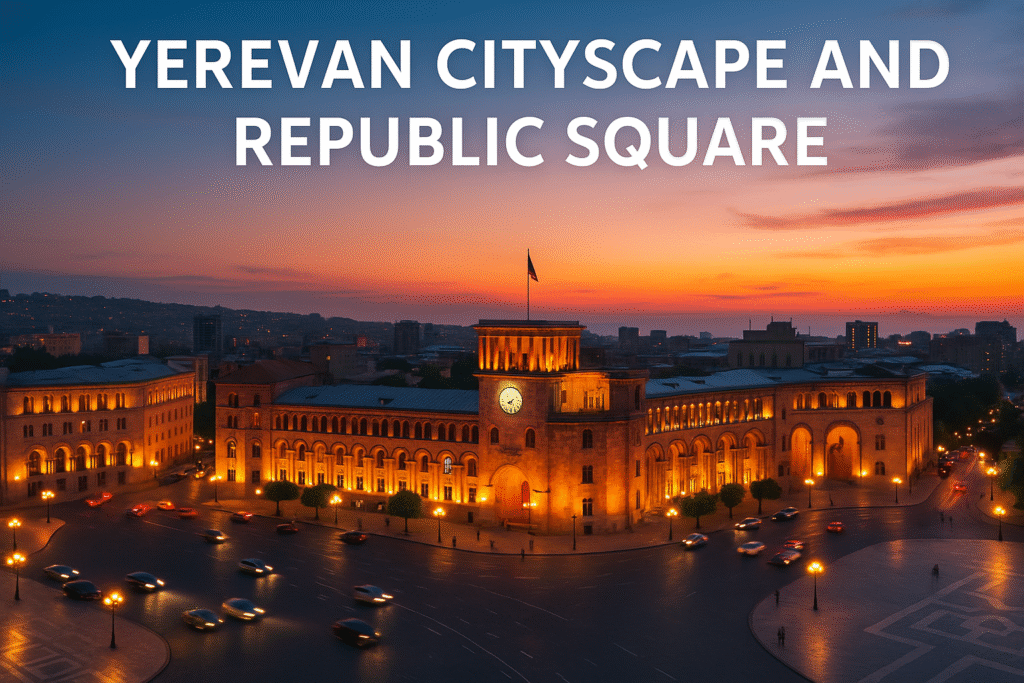
Armenian Culture and Heritage
Language and Script
- Armenian is the official language; Mesrop Mashtots created its own distinctive script for it in 405 AD.
- spoken by more than 6 million people globally (because of a sizable diaspora)
Religion
- Apostolic Church with a predominantly Armenian membership
- National identity is strongly rooted in Christianity.
Traditions and Values
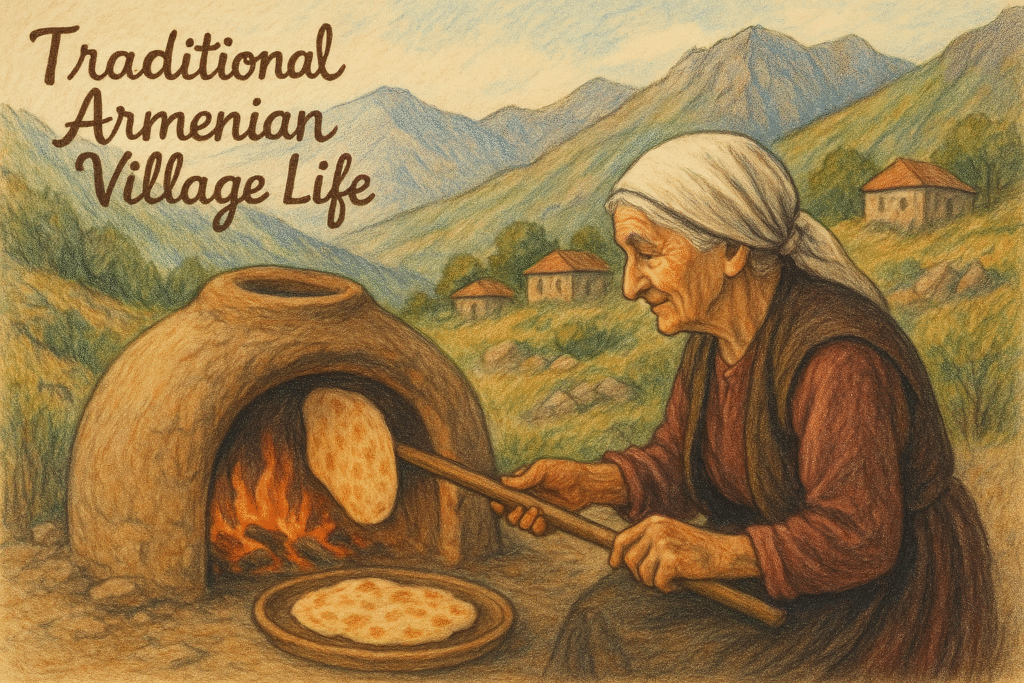
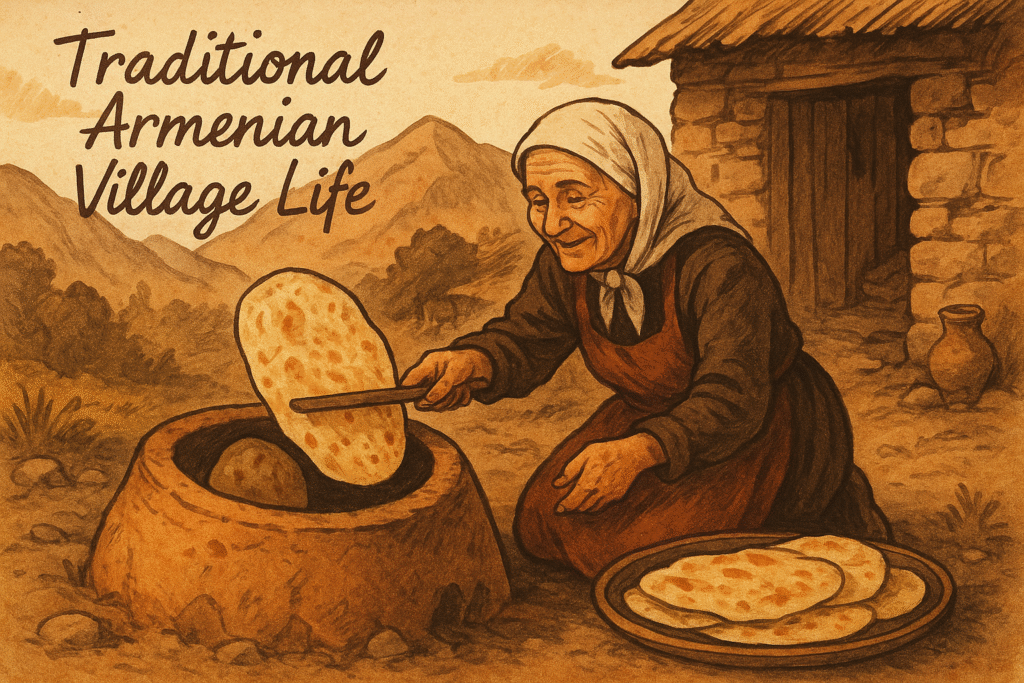
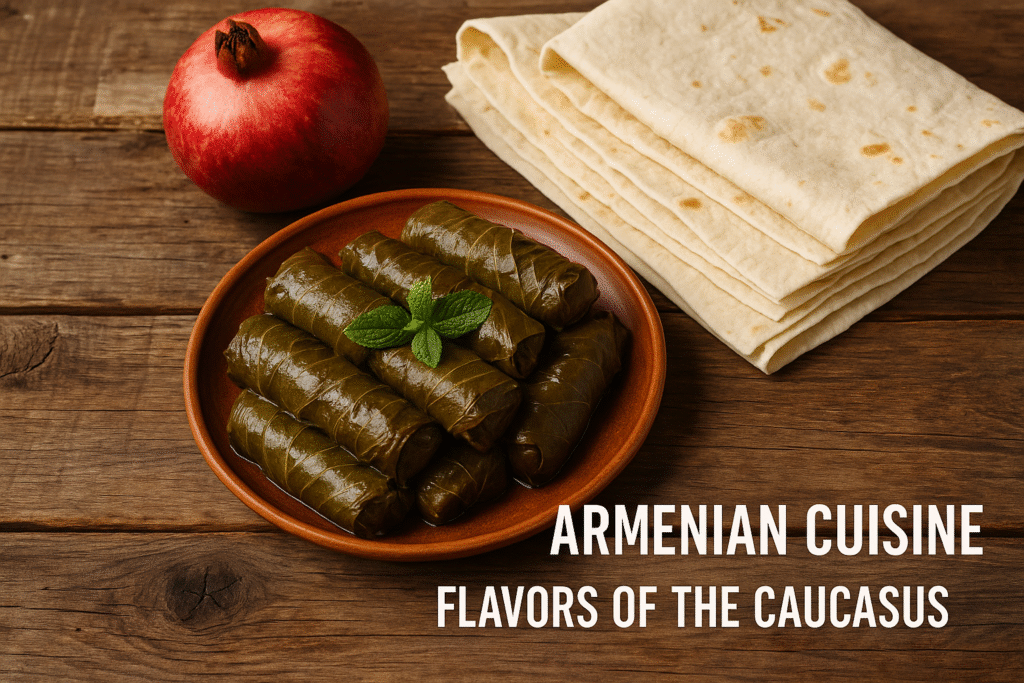
- family-oriented culture
- A strong focus on elder respect and hospitality
- Rich oral traditions, music, and dance

Festivals and Celebrations
- Originally pagan, Vardavar (Water Festival) is now Christian.
- September 21 is Independence Day.
- April 24 is Genocide Remembrance Day.
- Christmas and the New Year (observed on January 6)
Arts and Crafts
- Miniature painting, traditional carpet weaving, and stone carving (khachkars)
- Music combines classical elements with folk instruments like the duduk, zurna, and kanun.
The Economy of Armenia
Economic Overview
- The Armenian Dram (AMD) is the currency.
- Type: Mostly service-based, emerging economy
- GDP for 2023: about $20 billion
Key Sectors:
- One of the industries with the quickest rate of growth is information technology (IT).
- Agriculture: wine, dairy, peaches, apricots, and grapes
- Mining for gold, copper, and molybdenum
- Tourism is growing quickly, with an emphasis on heritage and ecotourism.
Trade and Exports:
- Exports to China, the EU, and Russia
- Important exports include food, minerals, textiles, and IT services.
Challenges:
- Geographically, landlocked
- Regional disputes, particularly those involving Nagorno-Karabakh and Azerbaijan
- Trends in migration and energy dependence
Major Cities of Armenia
Yerevan
- The largest and capital city
- renowned for its pink tuff architecture, Cascades, and Republic Square
- Major museums, cultural institutions, and universities are located there.
Gyumri
- The second-biggest city
- Rich in Russian architecture from the 19th century
- Cultural capital with a rich history of the arts
Vanadzor
- industrial centre
- Perfect for hikers, surrounded by mountains and forests
Dilijan
- referred to as the “Switzerland of Armenia”
- renowned for its academic institutions, wellness resorts, and nature reserves
Etchmiadzin
- Armenia’s spiritual capital
- Centre of the Armenian Apostolic Church and home to the Mother See of Holy Etchmiadzin
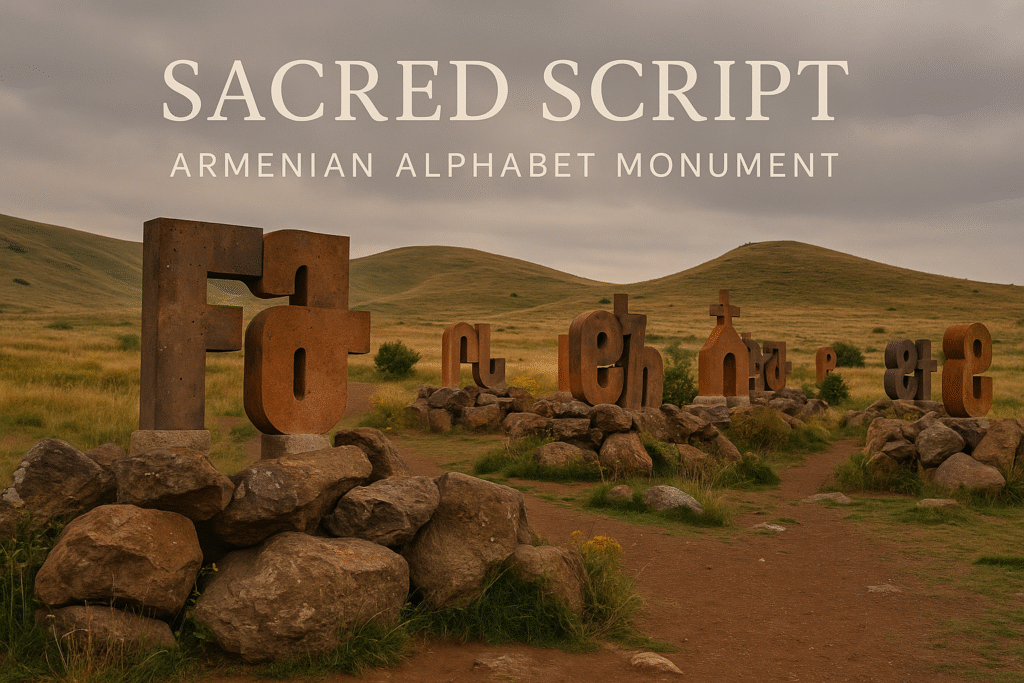
Tourist Attractions in Armenia
UNESCO World Heritage Sites
- The Upper Azat Valley and Geghard Monastery
- Haghpat and Sanahin Monasteries
- The Archaeological Site of Zvartnots and the Cathedral and Churches of Echmiatsin
Natural Wonders
- Armenia’s “blue-eyed beauty” is Lake Sevan.
- Climbers’ favourite is Mount Aragats.
- Debed Canyon is home to numerous caves, churches, and forts.
Cultural and Historic Landmarks
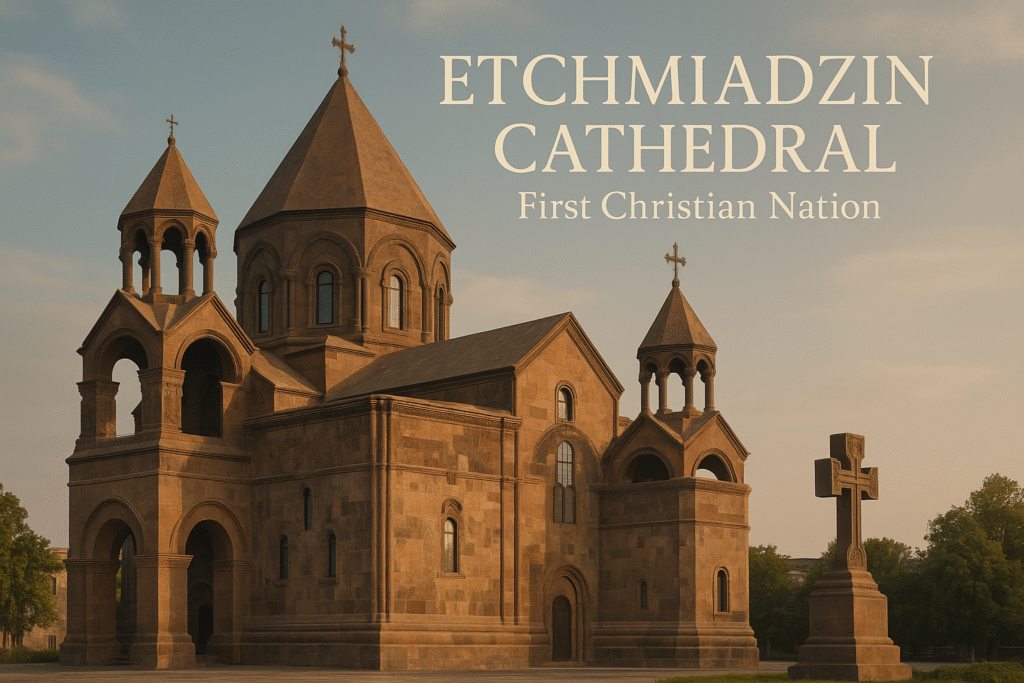
- Mount Ararat can be seen from Khor Virap Monastery.
- The striking red rock background of Noravank Monastery
- Greco-Roman architecture at the Garni Temple
- Tatev Monastery and Tatev Cable Car Wings
Adventure and Outdoor Travel
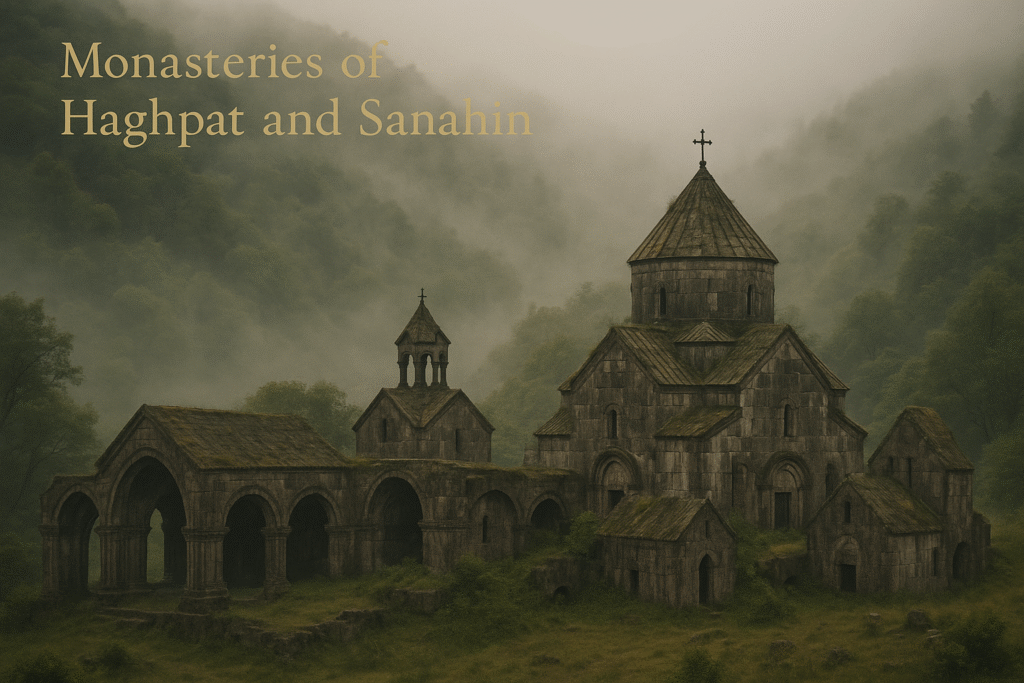
- Dilijan National Park hiking
- Tsaghkadzor skiing
- Wine tasting excursions in the Areni area
Language, Society, and Education
Language:
- The 39-letter Armenian alphabet has been in use since the fifth century.
- English and Russian are also frequently taught.
Education:
- 99% or higher literacy rate
- strong focus on teaching science and maths
- International students are drawn to Yerevan’s universities.
Social Structure:
- robust networks of communities
- Respect for education and cultural identity
Armenia in the Global Context
- Since: March 2, 1992, UN Member
- Participant in the Council of Europe, La Francophonie, CSTO, EEU, and other
- robust diaspora in Iran, Lebanon, France, the United States, and Russia
- Continuous involvement in cultural diplomacy and international peacekeeping
Unique and Fascinating Facts About Armenia
- The first Christian country in the world (301 AD)
- The location of Areni-1 Cave, where the oldest shoe and winery in the world was found
- Every year, the Armenian alphabet is revered and honoured.
- Despite being in Turkey today, the fabled Mount Ararat is a national icon.
- In Armenian schools, chess is required.
- One of the few countries where the population is monoethnic
- There is a thriving tech startup scene in Armenia, particularly in Yerevan.
Summary
Armenia is more than just a place to visit; it is a spiritual journey, a living museum, and a resilient country that has endured for thousands of years. Armenia skilfully combines the ancient and the modern, from its untamed landscapes to its revered monasteries, from its ancient alphabets to its state-of-the-art technological advancements.
Armenia offers a profound, rich, and remarkable experience, whether you’re following in the footsteps of apostles, enjoying wine in a mountain village, or investigating mediaeval stonework beneath the stars. Armenia continues to be a timeless gem for tourists, academics, and inquisitive minds alike.
Discover Armenia, a place where beauty endures and history whispers.
1. UNESCO World Heritage – Armenia
🔗 https://whc.unesco.org/en/statesparties/am
👉 Best for: “UNESCO World Heritage Sites in Armenia” section
Provides details on Armenia’s World Heritage sites like Haghpat, Sanahin, and Geghard Monastery.
2. Armenia Tourism Official Website
🔗 https://armenia.travel
👉 Best for: General travel guidance or at the end of the blog
Official Armenian tourism portal with updated travel information, events, and itineraries.
3. CIA World Factbook – Armenia
🔗 https://www.cia.gov/the-world-factbook/countries/armenia
👉 Best for: Geography, demographics, or economy section
Gives verified data on Armenia’s geography, population, economy, and more.
4. World Bank – Armenia Economic Overview
🔗 https://www.worldbank.org/en/country/armenia/overview
👉 Best for: Economy of Armenia section
In-depth look at Armenia’s economic trends, GDP, reforms, and development programs.
5. Visit Yerevan – Yerevan Municipality Tourism Portal
🔗 https://yerevan.am/en/tourism/
👉 Best for: “Yerevan City” or “Capital Overview” section
Official guide to explore Yerevan’s culture, landmarks, and events.
6. Britannica – History of Armenia
🔗 https://www.britannica.com/place/Armenia
👉 Best for: History or Ancient Armenia sections
Well-researched historical account of Armenia’s timeline and significant events.
7. UN Armenia – United Nations in Armenia
🔗 https://armenia.un.org
👉 Best for: UN Membership status or Global Engagement
Details Armenia’s role and collaboration with the United Nations.
8. National Statistical Committee of Armenia
🔗 https://armstat.am/en/
👉 Best for: Population, economy, or factual data section
Up-to-date statistics from Armenia’s government agency.
9. Wikipedia – Culture of Armenia
🔗 https://en.wikipedia.org/wiki/Culture_of_Armenia
👉 Best for: Cultural Heritage or Traditions section
Great overview of music, dance, architecture, food, and festivals.
10. Armenian Church Official Website
🔗 https://www.armenianchurch.org
👉 Best for: Christianity and Spiritual Heritage section
Covers the Armenian Apostolic Church, its traditions, and sacred sites.



